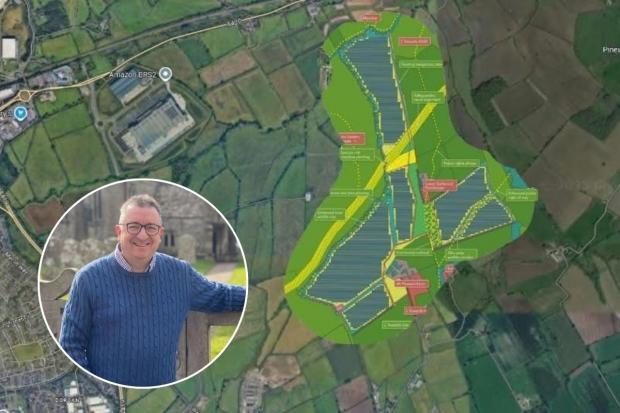Community Concerns Over Proposed Solar Farm Development
Residents in the area are expressing strong opposition to a new solar farm development that is set to occupy 150 acres of farmland. The project, proposed by Belltown Power based in Bristol, is planned for Mount Pleasant, located just east of Wanborough near Swindon. This location has raised several concerns among local residents and officials.
Gary Sumner, the borough councillor for Ridgeway Ward, highlighted that the site is designated as “protected countryside.” This area was specifically designed to prevent the expansion of local villages into the New Eastern Villages. Cllr Sumner emphasized that the solar farm would cover a significant portion of the land and would be a 35 megawatt facility with a 40-year lease. While the company has promised that the land will revert to farmland after the lease ends, there are doubts about its condition after four decades of use.
The development also poses potential challenges regarding traffic. The access point is through a single country lane, which is home to several farms and nearby landmarks such as Earlscourt Manor. Residents are worried about the increased traffic from heavy goods vehicles (HGVs), which could lead to noise pollution and safety issues. Although the developers claim the noise would resemble bees buzzing, many question whether this is acceptable for the local community.
Cllr Sumner noted that he is not against solar farms but believes that Swindon has ample unused roof spaces and car parks in the town centre that could serve as more suitable locations for solar energy projects. He argues that there is no need to convert farmland into a solar farm.
Environmental and Aesthetic Concerns
The proposal has also drawn criticism from other members of the community, who are concerned about the environmental impact of the solar farm. Adrian Williams, a resident of Swindon, voiced his concerns on the Swindon Borough Council website, stating that the project should raise significant alarms. He pointed out that the development would have a substantial effect on Redlands Village, both environmentally and for its residents.
Williams highlighted that the infrastructure associated with the solar farm—such as fences, access tracks, and thousands of solar panels—would be highly visible from homes, footpaths, and surrounding roads. This visibility could drastically change the rural character of Redlands Village and diminish the sense of separation from the urban fringe.
Jamie Dunkley also expressed serious concerns about the project, though he supports renewable energy. His main issue revolves around access management. Jamie’s home is approximately 2.5 metres from the proposed access route, making him particularly invested in the implications during construction and ongoing maintenance. After reviewing the Construction Traffic Management Plan (CTMP), he found the document to contain inaccurate, inconsistent, and misleading information, especially regarding road capacity and traffic routing.
Jamie also mentioned that Mount Pleasant Lane is a private road, which is not clearly stated in the proposal. He pointed out that section 2.4 incorrectly states that Horpit is five metres wide, while it is actually closer to three metres at its widest point, except at the junction with Wanborough Road. There is also concern about the lack of space for safe passing of pedestrians, cyclists, or horse riders by HGVs on Horpit.
Valerie Brodin from Hinton Prava objects to the development, emphasizing that parts of the site fall within the Area of Non-Coalescence. This area aims to ensure that the land between the New Eastern Villages and existing villages remains part of the countryside. The applicant acknowledges in their submission that the proposed solar array is not “very small-scale” and would not preserve the countryside character. This development could significantly alter the peaceful rural character of the existing historic villages and reduce the sense of separation from the urban fringe.






